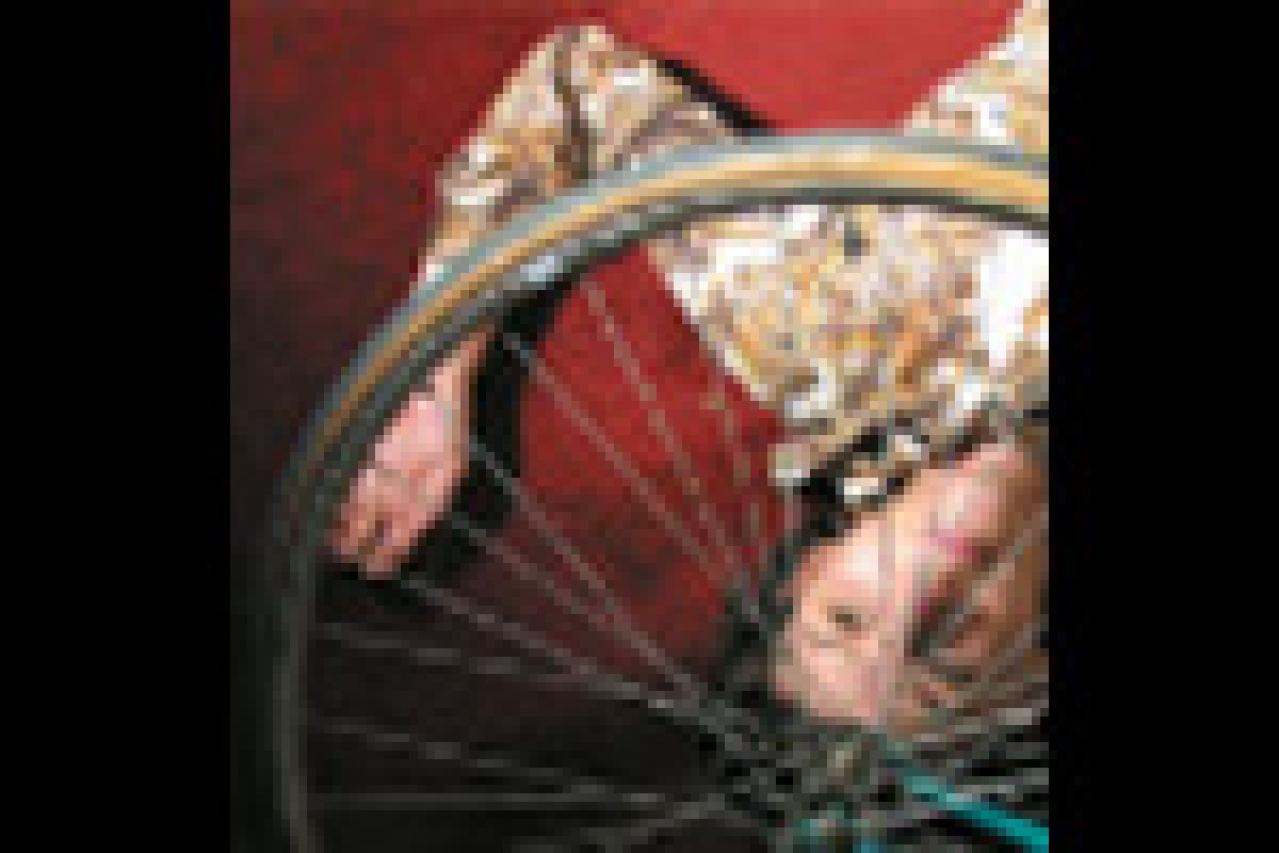2012 FringeNYC Roundup #3
*****************

(© Dixie Sheridan)
Two loosely connected and well-acted monologues form the basis for Matthew MacKenzie’s The Particulars at The Studio at Cherry Lane Theatre.
Ashlie Atkinson begins the hour-long show as Lillian, a youth minister filling in for the regular preacher who was injured in an ice hockey accident. She tells a rambling story about going to the Congo in search of her mentor, who disappeared there four years prior.
The speech starts out rather light-hearted, but grows darker as Lillian recounts some of her experiences, culminating in her taking care of a baby gorilla in a most extraordinary fashion. Atkinson handles the transition smoothly, and her emotional connection to the material lends poignancy to this far-out tale.
Brian Silliman then takes the stage, narrating the story of Gordon, a member of Lillian’s congregation, who lives alone in a house that is made maddening by a strange scratching in the night.
As Gordon hatches various schemes to catch the unseen intruder, the narrative once again moves to darker places, and the final twist at the end is decidedly grim.
Silliman has a magnetic presence and knows how to vary intonation to build suspense or emphasize the humorous aspects of the script. Director Jordana Williams also deserves some of the credit for drawing out fine performances from both actors in MacKenzie’s oddly compelling play.
— Dan Bacalzo
[[pg]]

(© Lorah Haskins)
Using the concept of ‘what happens after the happily-ever-after?’ as its starting point, The Hills Are Alive!, now playing at Theatre 80, is set after the inspiring-yet-absurd ending to the film version of The Sound of Music, which has the Von Trapp family escaping the Nazis by climbing the Alps.
Maria, the Captain, and all seven children are represented here, though they are given new names — Captain Von Trapp becomes Captain Von Klapp, Maria is Mathilde, etc. Written by Eric Thomas Johnson and Frankie Johnson (the latter also plays little Gerdy, providing the show with some of its best comic moments), The Hills Are Alive! puts the cheery family in a situation that defies optimism. As the clan attempts to survive the elements, they are bedeviled by everything from bears to menacing mountain folk.
The songs are all written to be reminiscent of tunes from the Rodgers & Hammerstein musical, so, for example, there is an opening number called “All Nature’s a Symphony” that makes one think of “The Sound of Music.” “Wiegenlied,” one of the show’s funniest songs, has the Captain crooning a German “Edelweiss”-like tune that teaches children to fear their dreams.
The Fringe show embraces a gleefully dark sense of humor while still remaining fairly wholesome. Yet, it does not manage to draw as many laughs out of its source material as one might hope. The songs are often too earnest to be very funny, and while Ashley Ball does a hilarious impression of Julie Andrews, the show’s focal point is the children, who spend most of their time whining about their circumstances.
Nonetheless, The Hills Are Alive! is a pleasant lark for fans of The Sound of Music who have always wondered how that hike to Switzerland might have gone.
— Brooke Pierce
[[pg]]

(© CUEPIX/Michelle Morgan)
The songs of Dolly Parton provide the soundtrack for the lives of three lonely individuals in Hope is the saddest, at La MaMa’s First Floor Theatre. Written and directed by Jeffrey Jay Fowler, and created and performed by the company, this Australian entry into the festival has a quirky charm, even if not everything works.
A vehicular accident initially brings together stoner Theo (Fowler), mentally unbalanced Marion (Natalie Holmwood), and Dolly obsessed Hope (Michelle Robin Anderson). Marion is the driver of the car that hit Theo’s bicycle, and she quickly speeds away, leaving Hope to care for the injured man.
Hope falls instantly in love with Theo, and is only slightly discouraged upon finding out that he’s gay and has a boyfriend. Meanwhile, Marion’s attempts to find friendship in her new neighborhood eventually lead her to Hope’s door. She also runs into Theo again, although that encounter has a surprise outcome that is too deliciously wacky to spoil.
Anderson gives Hope a wide-eyed openness that is appropriate, while Holmwood goes all-out to showcase Marion’s bizarre behavior; she’s also quite good lip-synching to Parton’s “Hard Candy Christmas.” Still, both portrayals seem somewhat caricatured. Fowler delivers the most grounded portrayal of the three cast members, but even his performance doesn’t have much depth.
This ultimately may have more to do with the writing, which seems to emphasize an off-beat style with less attention paid to developing nuanced characterizations.
–Dan Bacalzo













